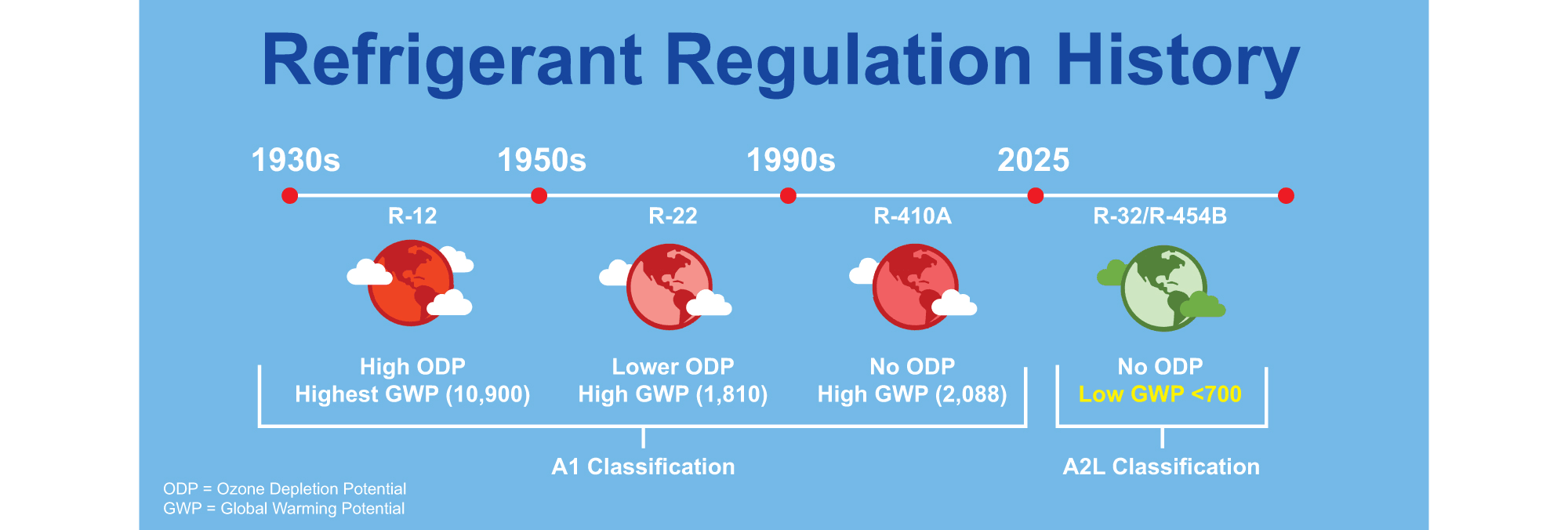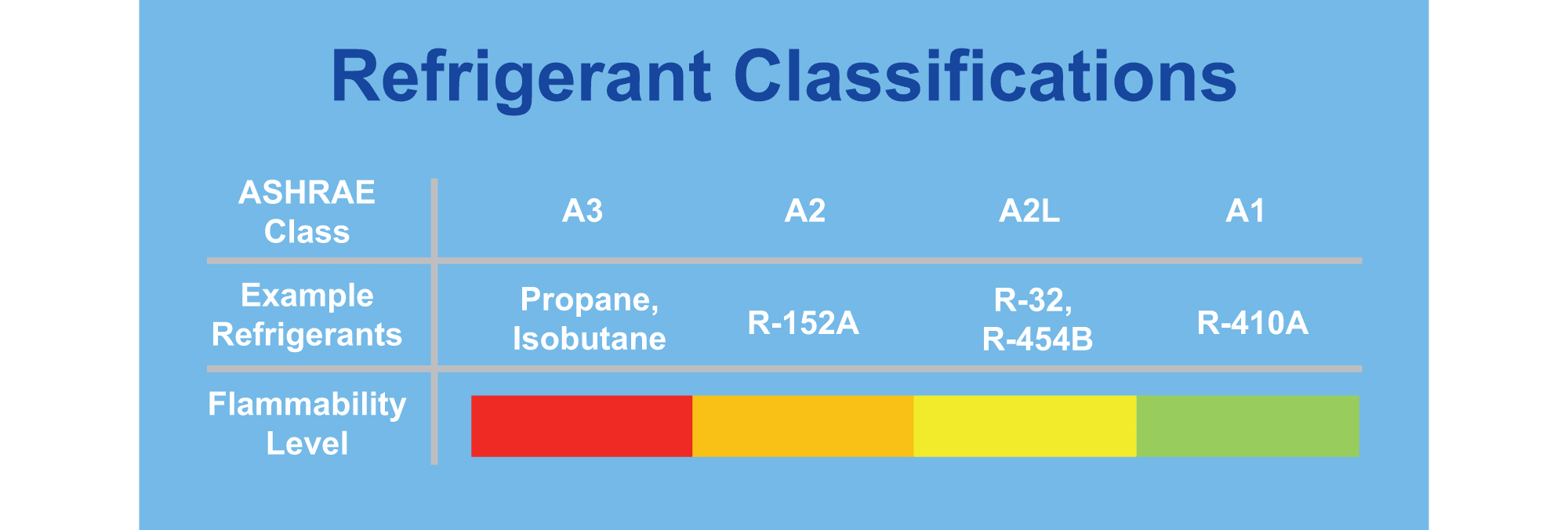
In 2020, the American Innovation and Manufacturing (AIM) Act was enacted into law, which authorizes a 15-year phasedown of hydrofluorocarbons (HFCs) across of a variety of applications—including HVAC.
Come 2025, the Environmental Protection Agency (EPA) will set a 750 global warming potential (GWP) limit for air conditioning. This means that R-410A, with a GWP of 2,088, will no longer be able to be used in new equipment.
So, what will it be replaced with?
The most common low GWP alternatives are classified by ASHRAE as mildly flammable, or A2L. Due to their mildly flammable characteristics, A2L refrigerants will require updates to standards and building codes to allow for their safe installation.
Puron Advance is Bryant’s new refrigerant that will replace Puron in all residential ducted and ductless and light commercial products. This new refrigerant, also known as R-454B meets the Environmental Protection Agency’s (EPA) anticipated Global Warming Potential (GWP) limits for refrigerants and the scheduled phasedown of higher GWP refrigerants like Puron™ or R-410A.

Global leaders worldwide are adopting much stricter control over the GWP of refrigerants, and the United States is getting on board as well. The Environmental Protection Agency (EPA) plans to limit the GWP of refrigerants to a maximum of 700 starting in 2025. At the same time, the EPA is implementing a phasedown of existing, higher GWP refrigerants, including Puron.
Beginning January 1, 2025, the EPA will no longer allow manufactures to build residential ducted and ductless HVAC equipment using the current R-410A (Puron) refrigerant. Puron Advance not only meets but exceeds the new requirement with a GWP of 466 and is a 75% reduction in GWP compared to R-410A.
If you examine the timeline below, you’ll see a history of change for refrigerants. And if you look closely, you’ll see the transitions from R-12 to R-22 and to Puron were focused on reducing ozone depletion. Something you won’t see on the chart: the previous transitions were made a little easier due to the number of readily available alternatives. Switching from R-410A to a lower GWP refrigerant has been a bit more complicated due to the lack of available options that didn’t require a refrigerant with a higher flame propagation.

The transition from R-22 to Puron came with an increase in GWP. It wasn’t ideal, but it helped us achieve the goal of finding a non-ozone depleting refrigerant. Now, with the change from Puron to Puron Advance, the focus has been to dramatically reduce global warming potential, while maintaining no ozone depletion. To achieve this goal, the industry had to collectively make another concession: a shift in flammability classification.
R-12, R-22 and Puron all fall into the A1 classification of refrigerants which have no flame propagation. Puron Advance falls into a new category – A2L – which is “mildly flammable.” We’ll go into more detail on flammability later – but be assured that the new refrigerant is still VERY low on the flammability scale and is quite safe.

A2L refrigerants like R-454B are considered mildly flammable, difficult to ignite, and have a low flame speed. It is important to note that Puron Advance poses no significant risk for installers, service technicians or homeowners.
Bryant and Garthside Ltd. are committed to safety and will, therefore, include a dissipation system in all products containing Puron Advance. This safety mechanism includes a leak dissipation system designed with a leak detector for activation of a unit fan and a dissipation board. When activated, the leak sensor sends a signal to the dissipation board, which energizes a blower to dissipate the refrigerant into the air stream. With our state-of-the-art dissipation system, homeowners can be confident that the required safety measures have been built into our system.